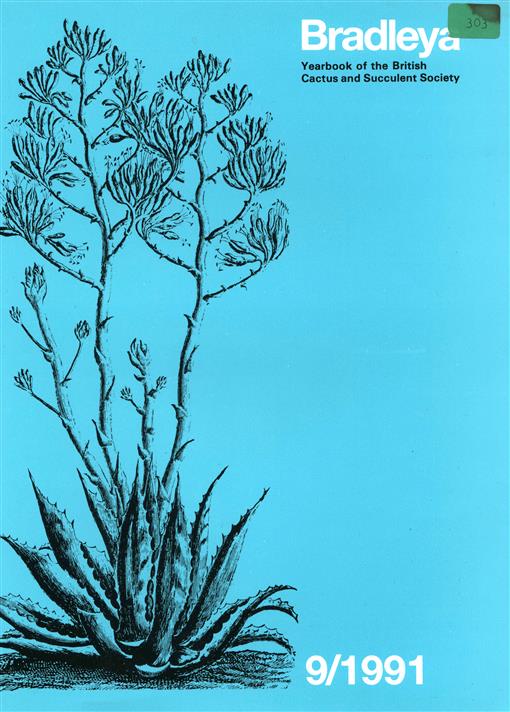Melocactus Link & Otto (31 spp.) is revised in Central and South America to include 24 species and 10 heterotypic subspecies, arranged in 6 species-groups primarily on the basis of fruit, seed and spination characters: M. oreas Group incl. M. oreas (2 subspp.), M. ernestii (2 subspp.), M. bahiensis (2 subspp.), M. conoideus; M. deinacanthus Group (1 sp.); M. levitestatus Group (1 sp.); M. azureus Group incl. M. azureus (2 subspp.), M. pachyacanthus (2 subspp.); M. violaceus Group incl. M. salvadorensis, M. zehntneri, M. lanssensianus, M. glaucescens, M. concinnus, M. paucispinus, M. violaceus (3 subspp.), M. neryi, M. smithii; M. curvtspinus Group incl. M. estevesii, M. mazelianus, M. schatzlii, M. andinus (sp. nov.), M. bellavistensis (2 subspp.), M. peruvianus and M. curvispinus (3 subspp.). There are 18 species in eastern and Amazonian Brazil (16 endemic), 3 in the region of the Guianas and Venezuelan/Colombian llanos, and 4 endemic to the central and northern Andes. Only one, polymorphic species, M. curvispinus, is recognized in Central America (incl. Mexico) and ranges southeastward into northern Colombia and northern Venezuela (also in Cuba). The relationships of the genus and species-groups are analyzed cladistically. A comprehensive survey of seed-morphology is presented together with keys to species and infraspecific taxa, descriptions, ecological data, distribution maps, cladograms, colour and halftone illustrations, a list of new names and an index to specific epithets. The remaining 7 Caribbean species of Melocactus, which have not been revised, are briefly treated in an appendix.
Die Arten der Gattung Melocactus (Cactaceae) in Mittel- und Südamerika. Die mittel- und südamerikanischen Arten der Gattung Melocactus Link & Otto (31 Arten) werden revidiert; im Gebiet umfasst die Gattung 24 Arten und 10 heterotypische Unterarten, die v.a. aufgrund von Frucht- und Samen-Merkmalen sowie der Bedornung zu 6 Artengruppen zusammengefasst werden: Die M. OREAS-Gruppe mit M. oreas (2 ssp.), M. ernestii (2 ssp.), M. bahiensis (2 ssp.), M. conoideus; die M. deinacanthus-Gruppe (einzige Art); die M. Levitestatus-Gruppe (einzige Art); die M. Azureus-Gruppe mit M. azureus (2 ssp.), M. pachyacanthus (2 ssp.); die M. Violaceus-Gruppe mit M. salvadorensis, M. zehntneri, M. lanssensianus, M. glaucescens, M. concinnus, M. paucispinus, M. violaceus (3 ssp.), M. neryi, M. smithii; die M. Curvispinus-Gruppe mit M. estevesii, M. mazelianus, M. schatzlii, M. andinus (sp. nov.), M. bellavistensis (2 ssp.), M. peruvianus und M. curvispinus (3 ssp.). 18 Arten kommen in Ostbrasilien und Amazonien vor (davon sind 16 endemisch), 3 Arten stammen aus dem Gebiet der Guianas und der Venezolanisch-kolumbian-ischen Llanos, und 4 Arten sind in den zentralen und nördlichen Anden endemisch. In Mittelamerika (inkl. Mexiko) wir nur eine einzige polymorphe Art, M. curvispinus, anerkannt, die imSüdosten bis ins nördliche Kolumbien und Venezuela verbreitet ist (ebenfalls in Kuba). Die verwandtschaftlichen Beziehungen der Gattung und Artengruppen werden kladistisch untersucht. Die Arbeit wird ergänzt durch einen umfassenden Überblick ¨ber die Samenmorphologie der





